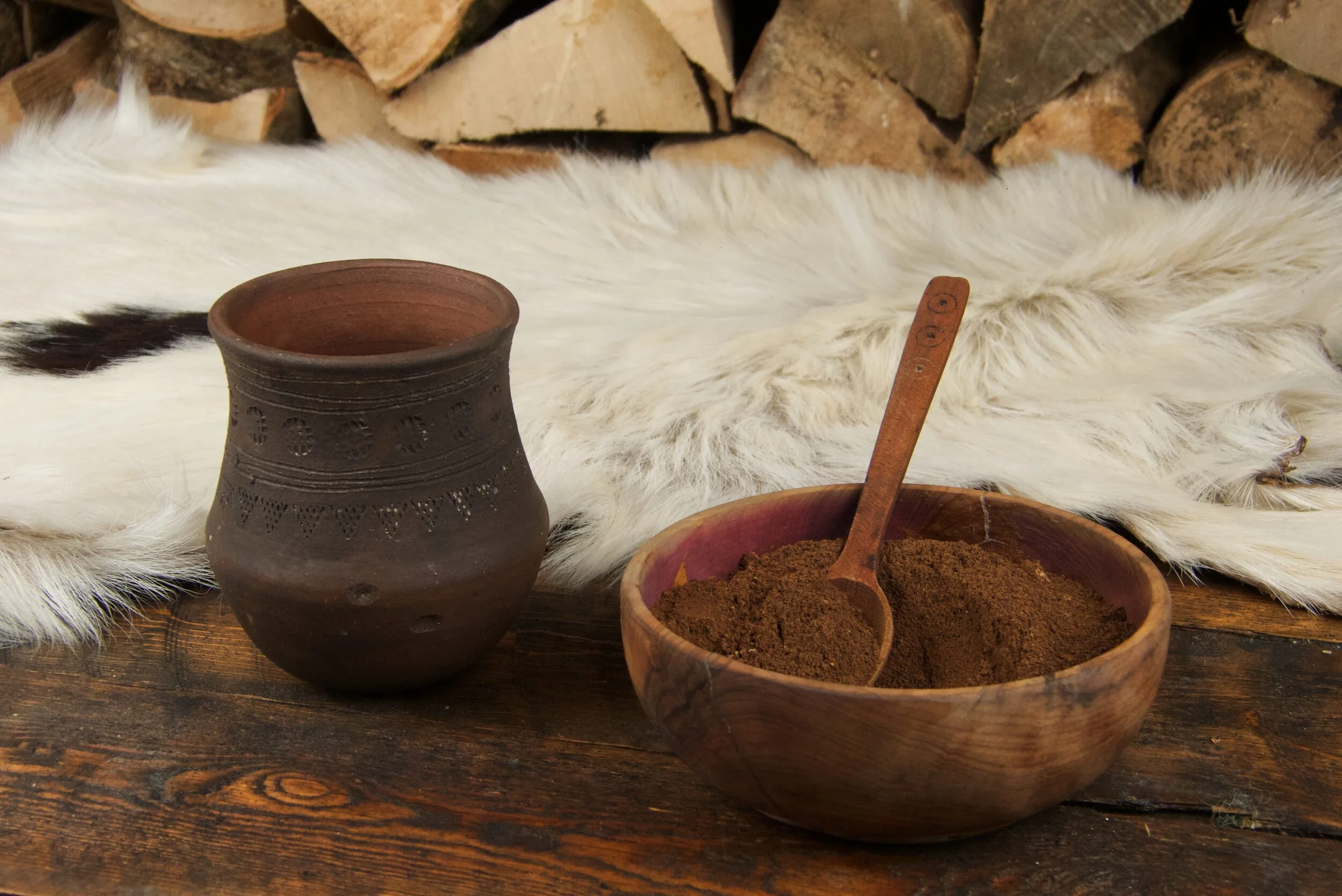With a lack of refrigeration, salting would have been a preferred method of preservation and storage for the Vikings and Saxons. Though with salt being expensive, brining would have been more commonly used.
Bacon seems to have been produced in large quantities, at least by the Saxons. This recipe, while being a modern variation, makes use of ingredients that where available at the time and is based loosely on an old Yorkshire bacon cure.
Ingredients:
For the cure;
300g salt
A few bay leaves
2 teaspoons juniper berries (crushed)
2 teaspoons black pepper (freshly cracked)
For the bacon:
1kg Pork belly
1 tablespoon honey
Vinegar
Method:
The quantities given here are approximates, don’t worry too much about them being exact.
Mix together the cure ingredients.
Rub the pork belly with honey.
Add 1 handful of the cure to a food safe container, large enough to fit the pork belly.
Add the pork belly and rub the cure into the meat. Place in the fridge or somewhere cool for 24 hours.
Drain off any liquid that forms in the container and sprinkle another handful of cure over the pork. Repeat this process for 5 days.
After 5 days, rinse the pork with clean, cold water and pat dry. It should be feeling quite firm at this stage.
Rub the pork with a little vinegar and either hang somewhere cool or put it back in the fridge. Wait for a minimum of 5 days before eating.






